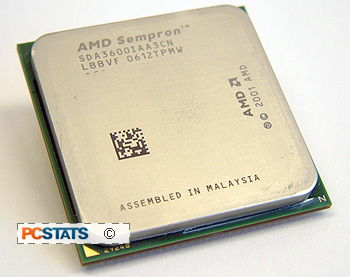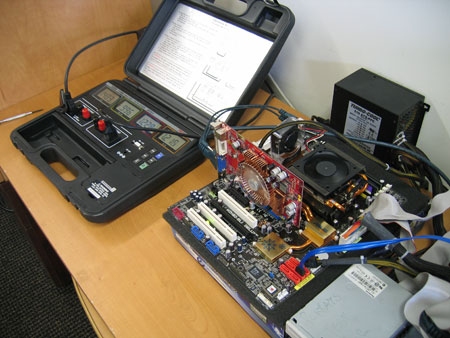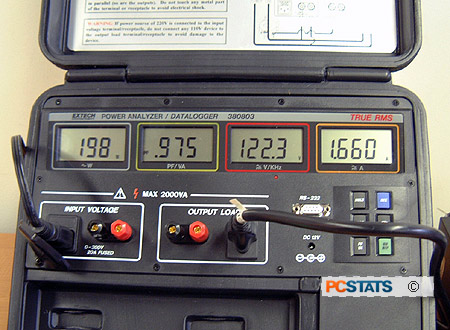 Gone are the days when performance benchmarks settled all Intel vs. AMD processor
debates.
Gone are the days when performance benchmarks settled all Intel vs. AMD processor
debates.
The tone
of the desktop
computing world is palpably shifting towards power conservation, and even
individual computer users are starting to ask themselves "just how much power is this going to
use?"
Perhaps it's only when we consider the 24x7x365 electrical operating
cost of a computer that these small power reductions muster any significance,
but there it is. In a sense, what's happening now parallels
the transition to from loud computers to the silent PC esthetic. Before hot-running
computer processors went quiet, enthusiasts' attempts to reduce the PC noise were exceptions
to the rule, rather than the norm.
An entire industry now thrives on selling quiet computer
hardware, could the same hold true for energy efficient desktop processors that don't
sacrifice performance? That certainly seems to be the direction electronics are headed, and
frankly this is a much overdue change.
I think we're all still finding our feet on
the energy efficient component, but it's certainly a new component PCSTATS
will be considering as we mull over the benchmark results of the
Sempron 3600+ processor. Now, let's start off with total system power draw
tests.
Sempron Total Power Consumption Tests
 The cost of energy is
increasing world wide, both monetarily and environmentally.
Any reduction in the amount of power a CPU requires is a welcome respite,
but wading through the technical numbers to figure out the differences can be confusing
because Intel and AMD report power values in slightly different ways.
The cost of energy is
increasing world wide, both monetarily and environmentally.
Any reduction in the amount of power a CPU requires is a welcome respite,
but wading through the technical numbers to figure out the differences can be confusing
because Intel and AMD report power values in slightly different ways.
On paper AMD appears to consume more power since its values
are higher, however AMD lists its maximum power
usage while Intel posts typical. Obviously the two
are not comparable and to find out which actually consumes more power, we
decided to test things out.
Representing Intel will be an Intel
Pentium D 940, Pentium 4 840, and Pentium D 540
processor. Standing in for AMD are the socket AM2 Sempron 3600+, Athlon64 FX-62, Athlon64 X2
5000+, and socket 939 Athlon64 4000+ and Athlon64 FX-60 processors.
The test specs for each system stayed as constant as
possible: Akasa PowerPlus AK-P550FF power supply, Western Digital 74GB Raptor hard drive, an 8x Gigabyte
DVD-/+RW drive and a MSI NX6600GT-TD128E videocard.
Cool 'n' Quiet is disabled for these tests because with
Cool 'n' Quiet enabled, total system power draw will be even less that what is
reported. A picture of the total system power draw test configuration is shown
at right. The Extech Power Analyzer is located between the mains 120AC supply
and the PC's power supply.
 |
PCSTATS uses an
Extech model 380803 Power Analyzer
Datalogger for measuring CPU power & total system power draw.
The tool can be found here if you would like
to replicate these microprocessor power measurements
yourself. |
To
simulate single-core load, the Prime95 Small FFTs test was run, and two
instances launched for dual core loading. Total system power consumption was
read with a Extech Power Analyzer Datalogger (model 380803) for both CPU loaded
and CPU idle states. These values are measuring an entire system while the processor is running under
computational load or idle.
How does
the socket AM2 Sempron 3600+ impact total system power draw? Let's have a
look....
